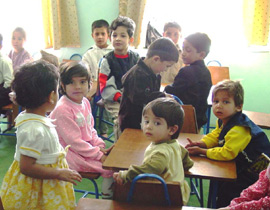
The library has served not only as a storehouse of knowledge but also as an increasingly important adjunct to the instructional program. In an earlier period the method of instruction was largely of the question-and-answer type, with dependence on a single authoritative source of information by the student in the preparation of his lessons. Later the lecture method came into prominence in the college, although the students were still expected to use textbooks in their study. The recent tendencies have been in the direction of expanding the amount of source material with which the student in expected to be familiar. Instead of or in addition to a single text, the student now is usually asked to red from a wide variety of sources on the topic covered in the course.
This change in instructional method has thrown stress on the library services of colleges an universities. Readings required of students in large classes must be available in many copies, and a system of reserved books with limited circulation has been evolved to assist in caring for these demands. Students are expected, to be able to look up the answers to their questions in the library, and to assist in this process it has been necessary to develop a reference service within the library.
The growth of human knowledge has complicated tremendously the storing and classification of books. The typical experience in almost every college that has constructed a new library building in recent decades in to find that the capacity of the building is exhausted within a short time after its construction is completed. Extensive systems of classification have been devised in order that the books on a given subject may be shelved together. In a large library the process of ordering, cataloguing, and making a book ready for use by regards is both slow and costly.
The complications of the task of managing a library have led to the development of specialized library services. Originally when the college libraries began to develop is was the custom to appoint some member of the faculty as the custodian of the books. The responsibilities of the librarianship soon outgrew this simple procedure and today in every well-managed college the library is in charge of a professionally trained, highly skilled expert. In a large library there is a corp of staff, members, each of whom is an expert in one of the various specialized line of library service. The cost of maintaining library service is no small item in the budget of institutions.
Today education is characteristically said to be library-minded. The adoption of the library method of instruction has marked a significant development in the instructional methods for educations. Perhaps the end has not yet been reached, for some have suggested that ultimately all the instructional services of a nonlaboratory type may be carried on in the library. Instead of professors lecturing to classes, the staff of the college may consist of specialized reference librarians who spend their time guiding the reading of students along the lines prescribed by the curriculum or dictated by the student's special interests.




